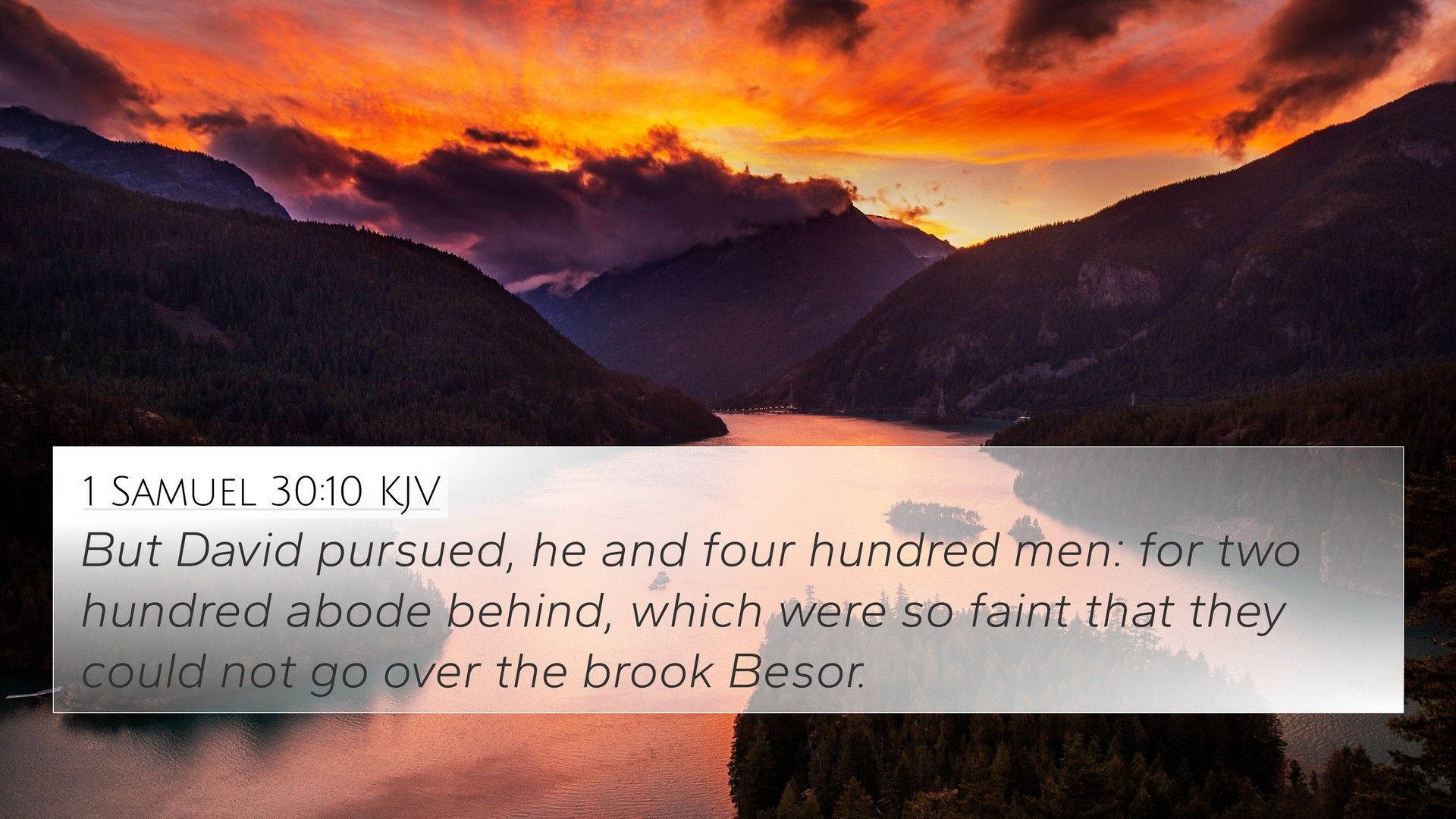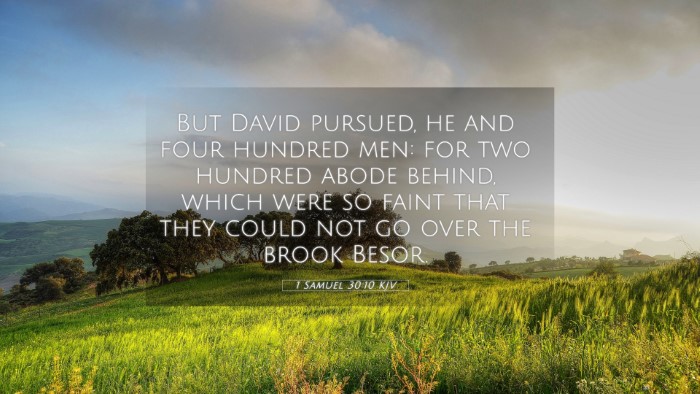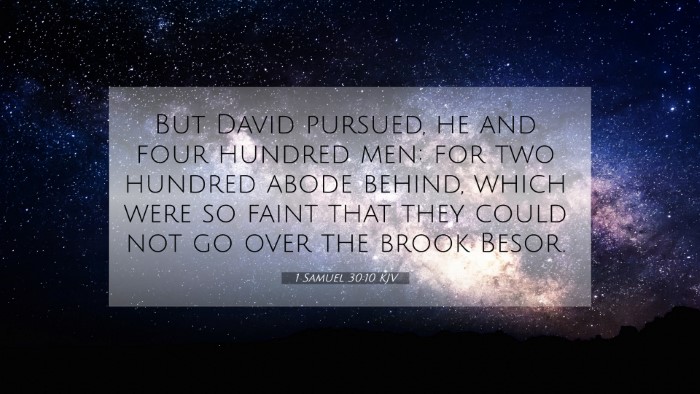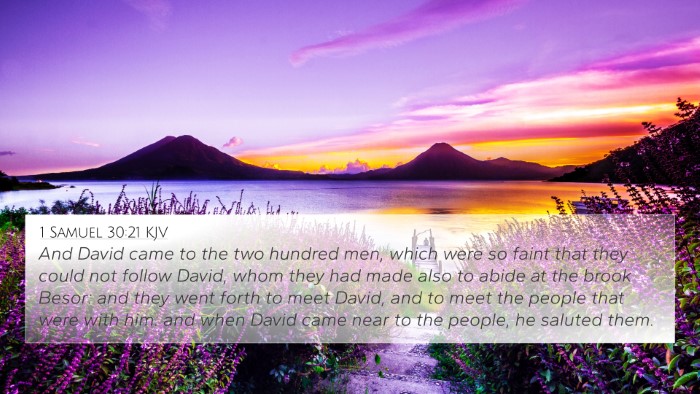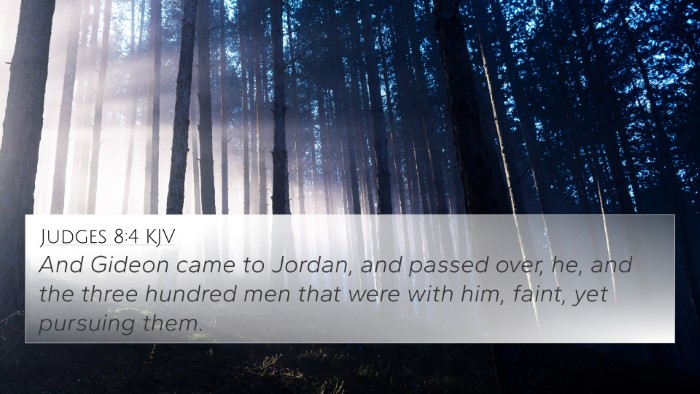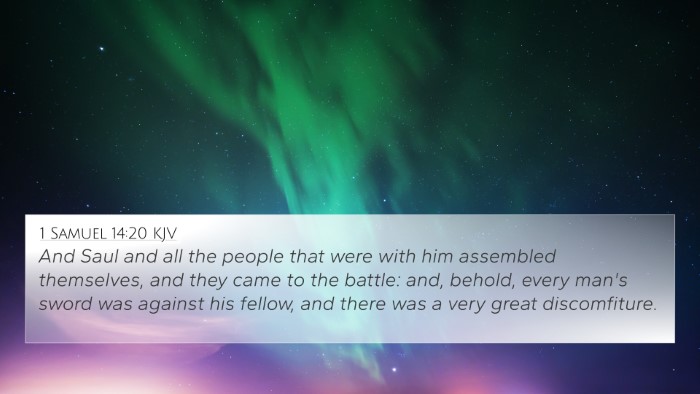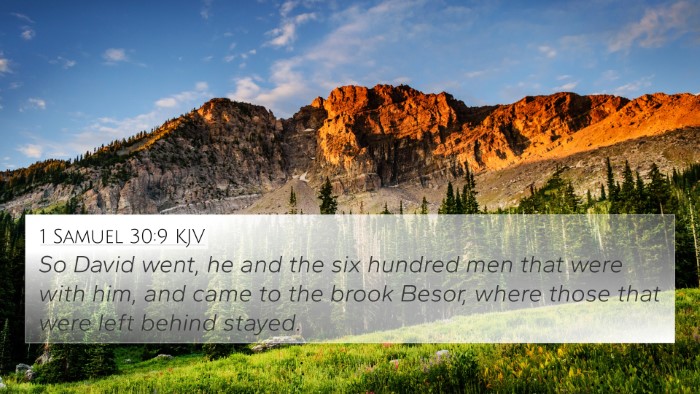Understanding 1 Samuel 30:10
Verse: 1 Samuel 30:10 - "But David pursued, he and four hundred men: for two hundred abode behind, which were so faint that they could not go over the brook Besor."
Contextual Overview
The narrative of 1 Samuel 30 describes a tumultuous time in King David's life. After he and his men returned to their home in Ziklag, they found that the Amalekites had raided and burned the city, taking captive their wives and children. In this dire situation, David's response and actions reflect his character and reliance on God amidst adversity.
Verse Meaning and Insights
-
David's Leadership:
David demonstrates strong leadership qualities by taking the initiative to pursue the enemy, showcasing his determination to recover what was lost. Matthew Henry notes that true leaders must act decisively, especially in times of distress.
-
The Importance of Strength in Community:
Only 400 men were able to accompany David, while 200 remained behind due to weariness. Albert Barnes highlights the notion of communal strength but also acknowledges individual limitations. This reflects the human condition of varying capacities among group members.
-
The Symbolism of the Brook Besor:
The brook may symbolize a point of challenge or a test of commitment. Adam Clarke interprets this as a moment where one's resolve is tested, showcasing both physical and spiritual endurance in the face of daunting circumstances.
-
Divine Providence:
David’s pursuit is not only a military operation but also a spiritual act of faith. The story emphasizes trusting in God's guidance during crises. Insights from various commentators elucidate how divine support is critical when undertaking difficult tasks.
Connecting Biblical Themes
In exploring the verse, we can make various thematic connections to scripture:
- Courage and Leadership: Similar to Joshua’s charge to be strong and courageous (Joshua 1:6), David’s boldness serves as an exemplar of leadership grounded in faith.
- Community and Individual Contribution: Reflective of the New Testament teaching in 1 Corinthians 12:12-26 about the body of Christ, where each member plays a vital role based on their ability.
- Restoration and Redemption: David’s pursuit mirrors the redemptive work of Christ. Just as David sought to restore what was lost, Jesus restores humanity through His sacrifice (John 10:10).
- Biblical Perseverance: Hebrews 12:1-2 speaks about running the race with perseverance. David's relentless pursuit serves as an illustration of this principle.
- Military Strategy and God’s Favor: The tactic of pursuing amidst disadvantages can parallel Gideon’s strategy highlighted in Judges 7, where God’s power is made evident through weakness.
- Human Limitations vs. Divine Strength: The faintness of David's men draws parallels to 2 Corinthians 12:9, which emphasizes that God's strength is made perfect in weakness.
- The Essence of Faith-filled Action: James 2:17 discusses the connection between faith and works, which is echoed in David’s decision to act rather than become paralyzed by fear or despair.
Cross-References for Deeper Study
Below are biblical cross-references that relate to the themes and messages in 1 Samuel 30:10:
- 1 Samuel 30:1-6 - David’s anguish upon returning to Ziklag.
- Hebrews 11:1-2 - Defining faith in action.
- 2 Timothy 4:7 - Running the race with perseverance.
- 1 Peter 5:8 - Being sober and vigilant in spiritual warfare.
- Psalm 23:4 - Assurance of God’s presence in dark times.
- Isaiah 40:29-31 - God gives strength to the weary.
- Philipians 4:13 - Strength through Christ.
Tools for Bible Cross-Referencing
Engaging with the scripture requires tools for deeper understanding and for finding meaningful connections:
- Bibles with Cross-Reference Systems: Many Bibles include notes or a column for cross-referencing related verses.
- Bible Concordance: This tool can help identify verses that share themes or key terms.
- Online Bible Study Tools: Many online platforms allow for searching and comparison across biblical texts.
- Scholarly Biblical Commentaries: Resources like those by Matthew Henry, Albert Barnes, and Adam Clarke provide insights into understanding scripture deeply.
Conclusion
The exploration of 1 Samuel 30:10 reveals profound truths about leadership, faith, and community. Calls to action in our own lives echo through the ages, encouraging us to pursue restoration and remain steadfast in challenges. By employing tools for cross-referencing and understanding biblical interconnectedness, we enhance our comprehension of God’s Word and its application in our lives.
